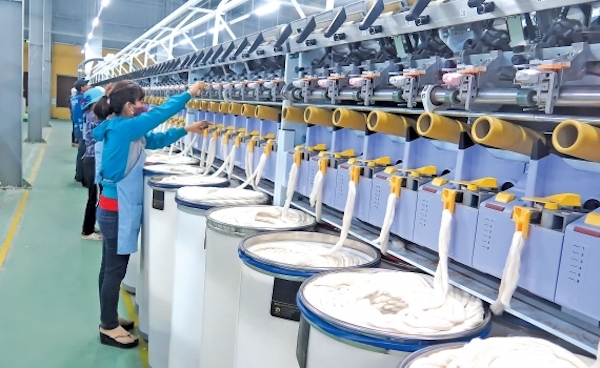China is the major export market for Vietnam’s yarn which consumes 56 percent of export volume and 57.2 percent of export vale.
However, Vietnamese enterprises are meeting difficulties when exporting to the market because Chinese importers try to force the export prices down to ease their losses caused by the yuan/dollar exchange rate fluctuations.

According to Vu Phuong Diep, deputy general director of Damsan JSC, previously, her enterprise exported 1,400 tons of yarn to China each month, but the export volume has decreased recently. Damsan has not obtained any orders for September.
“The export price has dropped dramatically. Yarn now can be sold at $2.4 per kilogram instead of $2.8,” she said.
“We don’t know if the US and China would take any more actions to increase the trade tensions between the two countries. Once tension occurs, our exports to China will stop,” she said.
| According to GDC, in the first seven months of 2019, fibre and yarn exports witnessed the price decrease of 8 percent compared with the same period last year due to the US-China trade war. |
According to GDC, in the first seven months of 2019, fibre and yarn exports witnessed the price decrease of 8 percent compared with the same period last year due to the US-China trade war. The yarn export price in the first seven months of the year was $2.531 per ton, or 8 percent lower than the same period last year.
This included 531,230 tons of exports to China, worth $1.37 billion, which meant an average export price of $2.584 per ton.
Meanwhile, yarn exports to Taiwan saw the sharpest decline of 30 percent in both quantity and export turnover.
The Vietnam Cotton and Spinning Association (VCOSA) has predicted that exports in the last months of the year will see little improvement as importers are buyingat moderate levels.
Vietnam’s yarn exporters are concerned not only about export price reduction, but the Chinese yuan devaluation.
From June to the end of 2018, the Chinese yuan lost 7.8 percent of its value against the dollar, while the dollar/yuan exchange rate went down from 6.4 to 6.95 yuan per dollar. Meanwhile, the dong still stayed firmly against the dollar. This means that Vietnam’s yarn has become more expensive.
While the average export price in June 2018 was $3 per kilogram, the price in late 2018 was 23 cent per kilogram more expensive because of the exchange rate fluctuation. In H1 2019, the dollar/yuan exchange rate rose slightly to 6.75 yuan per dollar, but then decreased to 6.9 yuan per dollar in early June 2019.
As such, if enterprises signed contracts with payment in Chinese yuan, they will suffer from currency depreciation as well.
Linh Ha

Vietnam acts with composure amid yuan devaluation
Since China is Vietnam’s biggest trade partner, the sharp yuan devaluation will affect Vietnam’s imports and exports with China.

How does yuan price reduction affect garment, footwear industries?
The sudden depreciation of Chinese yuan against the US dollar brings more difficulties to Vietnam’s yarn industry, according to Vietnam Textile and Apparel Association (VITAS).
 For every one percent of the yuan depreciation against the dollar, the price of Vietnam’s yarn export to China would lose 3 US cents per kilogram, analysts estimate.
For every one percent of the yuan depreciation against the dollar, the price of Vietnam’s yarn export to China would lose 3 US cents per kilogram, analysts estimate.